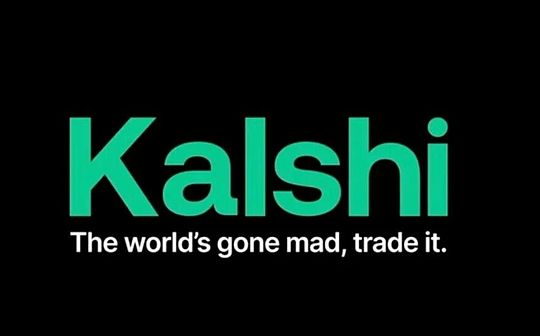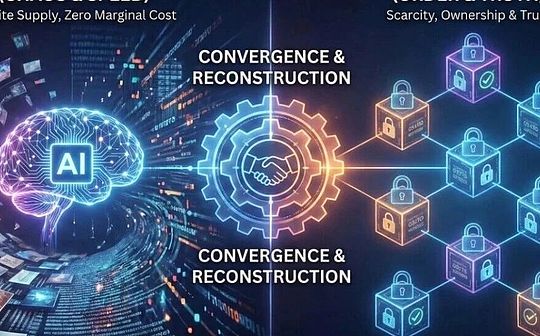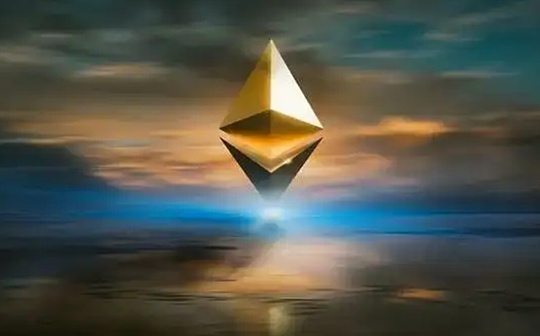
Author: Obol Source: Obol Official Website Translation: Shan Oppa, Bitchain Vision
summary
Obol has launched a funding model to strengthen and promote the decentralization of the Ethereum consensus.Users of the Obol Distributed Verifier (DV) cluster will contribute 1% of the staking reward to a traceable fund pool.These funds will be used to reward projects and innovations that add value and make an impact on Ethereum’s decentralization.
1% for Earth: 1% for Ethereum consensus
In the early 2000s, Patagonia founder Craig Mathews and Blue Ribbon Files founder Yvon Chouinard created a retrospective public goods fund (RPGF) for the Earth, recognizing that businesses that profit from Earth’s resources should also be dealing with protecting the Earth.Be responsible.This generated 1% for the Planet network, quickly gaining support from organizations around the world, and ultimately certified over $600 million in environmental donations.
For the Ethereum project, the Ethereum consensus is like Mother Earth: It is the foundation of trust for all the innovations that are taking place in our over $350 billion Ethereum ecosystem today.The consensus layer is where the network achieves the current blockchain state consistency through consensus mechanisms, which makes the security and decentralization of this layer crucial.Just as businesses are responsible for protecting the planet from which they reap resources, it is time for Ethereum staking projects to commit to strengthening the foundation of Ethereum – the consensus layer.
Make Ethereum secure, resilient and decentralized
Precedents of application layer funds
The current source of traceability funding mainly serves the application layer of the Ethereum network, focusing on the “faster and cheaper” Layer 2 (L2) expansion solutions and new driver requirements to expand the network to billions of users.The success of application-level funds has led to the explosion of a large number of new projects and innovations in L2 and other applications such as liquid pledges and re-staking.While these heroic efforts pave the way for the realization of our mission, new projects at the application layer also make it more important than ever to ensure and decentralize the consensus layer.The Ethereum network requires similar efforts and funding to expand the consensus layer.
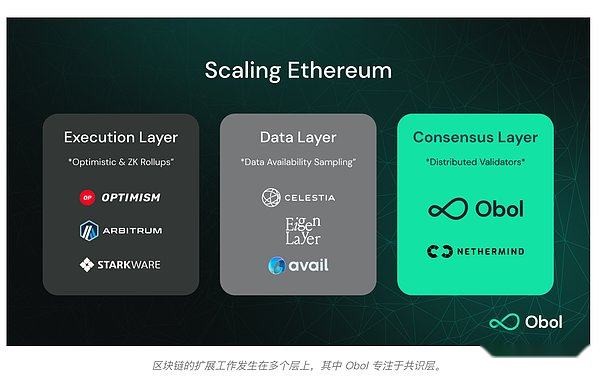
Funding from the consensus layer
To achieve Ethereum’s mission, it requires a consensus on security, resilience and decentralization.That’s why we created Obol: Ensure that the Ethereum consensus has the software and community needed to maintain trustworthy neutrality and minimal trust.
Today, we want to share our retrospective funding model designed to strengthen and decentralize the Ethereum consensus.With the development of the Obol funding model, the Ethereum community will not only obtain sustainable funds from the application layer, but also from the consensus layer of the network – the dawn of a new era.
Growth of ecosystems
Maintaining a distributed validator (DV) ecosystem requires not only technology: it also requires a sustainable funding source and forward-looking allocation mechanisms to drive innovation.As the ecosystem grows, network effects will drive more value and increase the flow of capital for Obol and the entire Ethereum ecosystem.This positive flywheel effect will accelerate a thriving ecosystem where teams and projects will work together to strengthen Ethereum’s consensus layer.
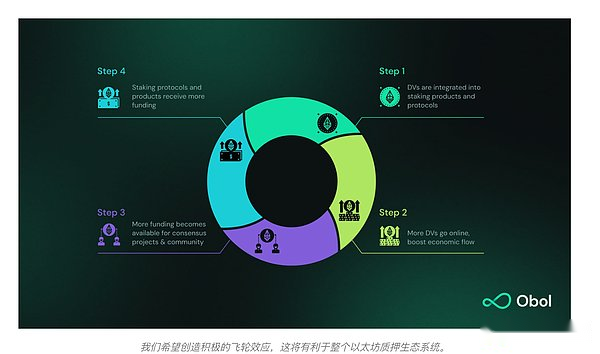
History Lessons – Ethereum’s Back-Tractical Funding
Proposal for early targeted block rewards
In the early days of Ethereum, the community realized the lack of a mechanism to reward researchers and developers who developed and maintained the platform.In 2019, Kevin Owocki from Gitcoin, Greg Markou from Chainsafe and Lane Rettig from the Ethereum Foundation proposed EIP-1890.The purpose is to provide sustainable ecosystem funding by directing a portion of each block reward to the developer fund at the Ethereum protocol level.However, it was found that direct targeting funds from the L1 Ethereum protocol would question Ethereum’s neutrality, so this EIP was not implemented (there is a similar fate in recent EIP-2025).
Directed L2 sorter fee
While capturing and allocating rewards directly from the Ethereum protocol would question its credibility neutrality, rewards generated for other layers of the Ethereum stack, such as Layer 2, are not.Optimism’s RetroPGF program, based on a design proposed by Vitalik in 2021, allocates a portion of revenue from Optimism’s Layer 2 sorter.The program supports many young projects that are very important to the Ethereum ecosystem: more than 250 projects have been funded to date, with the most recent third round of commitments to 30M OP tokens (over $100 million).Optimism’s rival Arbitrum is also actively leveraging their funds and is currently underway in the third phase of the Arbitrum Foundation grant program.These retrospective funding programs have built a thriving ecosystem of projects that drive innovation and bring value to Layer 2 and the broader Ethereum scalability efforts—it’s time to do the same for the Ethereum consensus layer.
1% for decentralization
Raise funds with a 1% pledge reward
Just like 1% is used on Earth, the 1% commitment philosophy also exists in the Ethereum ecosystem: Protocol Guild recently launched a “1% commitment” program that encourages projects to use 1% of its native tokens for the Ethereum protocoldevelopment.However, projects do not need tokens to fund such models: While Optimism now has their native OP tokens, they initially used their L2 sorter revenue to drive their public goods funding model.Why not do the same thing to the validator?
Similar models can be replicated at the L1 consensus layer.Obol is launching this funding model to enhance and promote decentralization of Ethereum consensus: users of the Obol DV cluster will contribute 1% of their stake rewards to Obol, which will then be used to reward those who add value at the Ethereum consensus layer.and impact projects and innovations.
The first batch of fund contributors
The first contributor to participate in this model is Lido, through its SimpleDVT module, which has recently launched on the mainnet, Lido is using Obol DV to board the ship for community operators and significantly expanding its node operator set.Soon, staking of EtherFi running on DV will provide an additional source of funding.(In fact, EtherFi is also the first project to commit 1% to Protocol Guild.)
“Obol’s 1% decentralization initiative is an excellent approach to strengthening the resilience and decentralization of the Ethereum protocol. By improving the economic sustainability of DVT-related technologies and research, it is ensured to be more accessible andVision of a more resilient validator set. Lido DAO contributors look forward to witnessing the further evolution of DVT adoption and supporting innovative teams that contribute to this mission through Obol validators running Simple DVT modules.”—Will Shannon, Lido Contributor, NOM Workflow
Allocate funds to decentralized projects
Obol aims to support anyone who adds value and makes an impact to the decentralized Ethereum consensus layer.This task requires a group.We need technology partners, researchers, educators, ambassadors, community contributors, staking agreements and of course node operators to become part of the campaign to strengthen Ethereum.
“At the Netherlands research team, we believe Obol’s 1% decentralization initiative is an important step towards long-term security and resilience of Ethereum networks. We are excited to see Sedge – our open source Ethereum full node deployment tool –— Play a role in this initiative by making it easier for developers to set up and manage validator nodes using DVT.” —Michał Zając, Head of Research, Nethermind
We plan to launch a preliminary retrospective funding trial round this year, focusing on projects that offer value in the distributed validator space.At this early stage, DVs must be made accessible to a wide range of users with different needs, implementation and skill levels.A particularly influential project category is distributed validator “starters” such as tools and products such as DappNode, Stereum, Sedge and Splits.org that help users create and manage DVs.Other important efforts include education, research, testing and community support, provided by projects such as EthStaker, Protocol Guild, MigaLabs and DV Stakers.
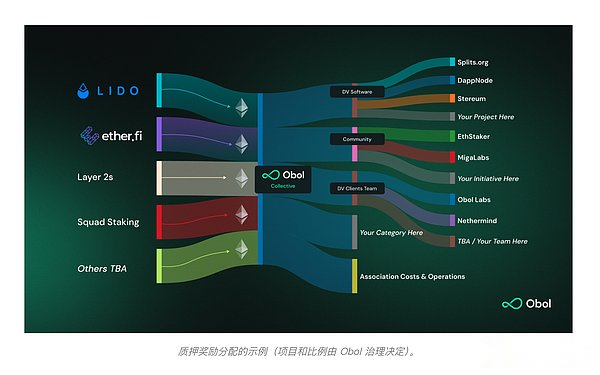
These are just some examples of impactful projects that we think of – as we increase the number of distributed validators on the main network and refine and improve our ability to run traceability fund allocations, grant rounds will expand to cover ecosystems as we increase the number of distributed validators on the main network and refine and improve our ability to run traceability fund allocations.large areas, thereby improving the decentralization of Ethereum.
This is just the beginning
Strengthen governance
This is just the beginning.There are many details to be figured out, and this model needs to be improved and iterated.Over the next few months and years, Obol aims to be a more open, community-governance and self-sustaining project.The goal is to support individuals and projects in support of their contributions to strengthening the Ethereum consensus, regardless of the type or size of their contributions.
To collect applications, vote, and allocate funds, we are trying to use tools and build the infrastructure we need.We will use the EasyRPG tool developed by the Gitcoin team, which itself is a public product developed after Optimism’s round 3, which projects can use to build their own retrospective financing rounds.




